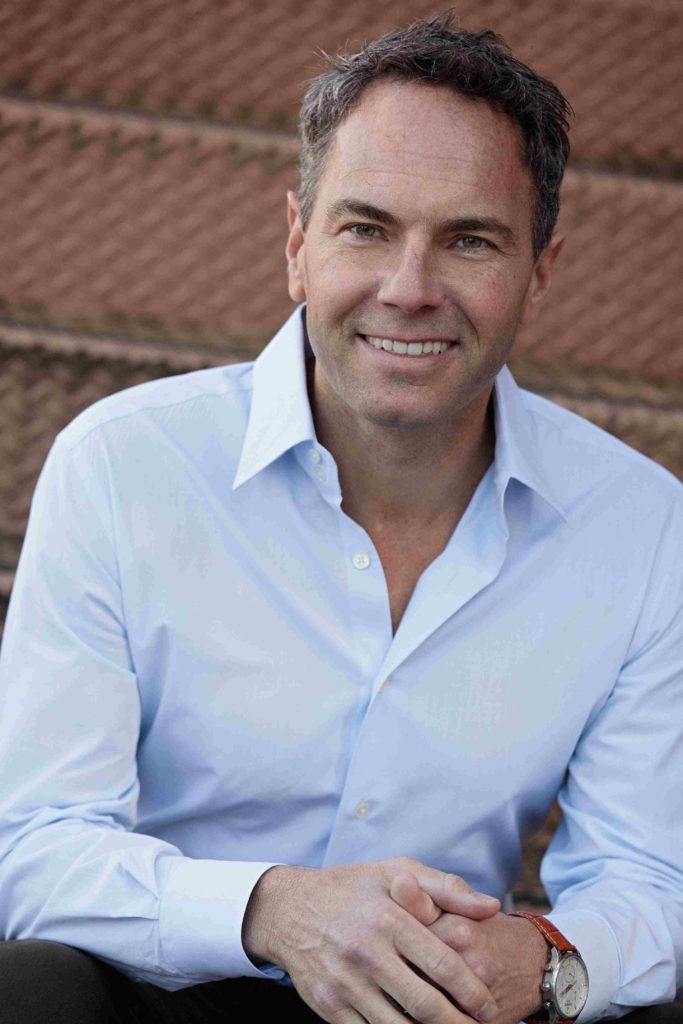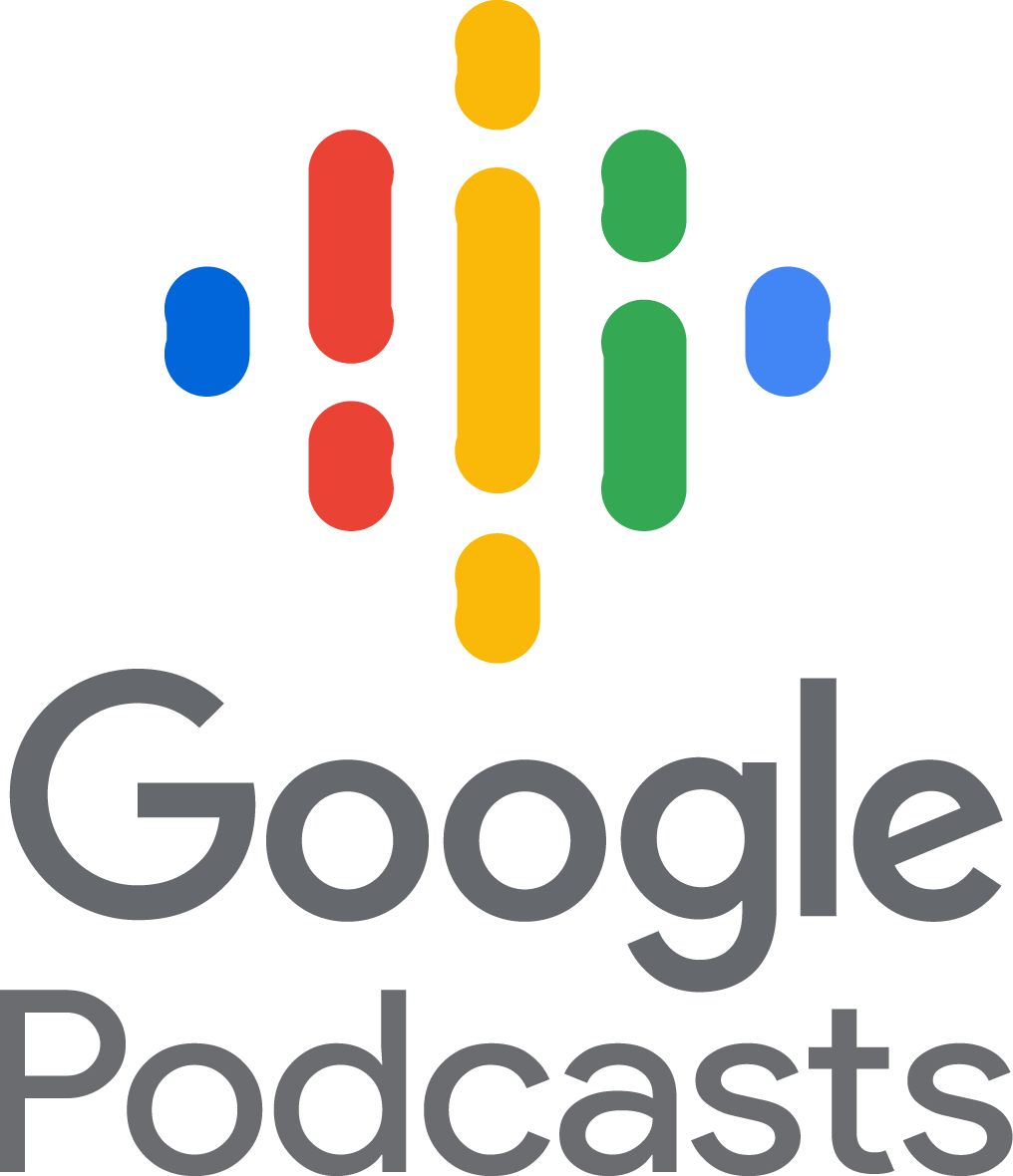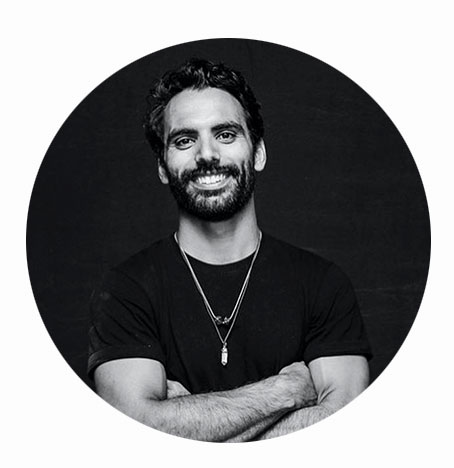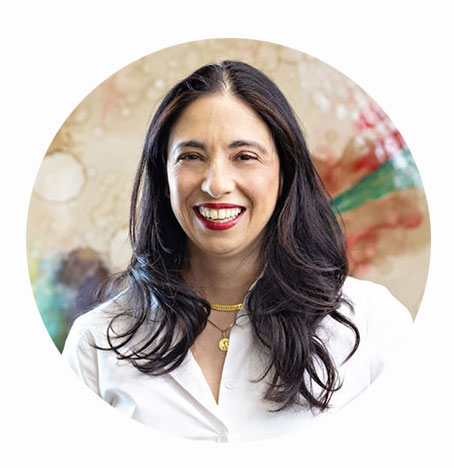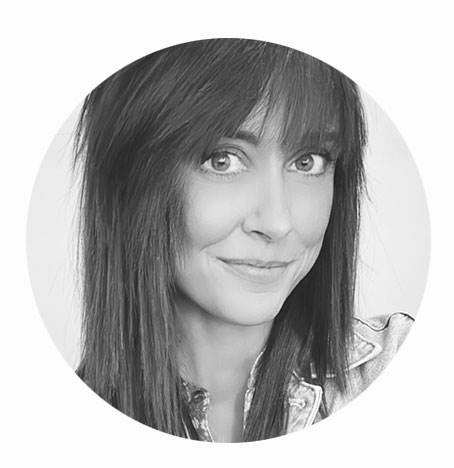Lara Schmoisman 0:05
Hello, welcome back to coffee number five. I’m so excited to be here today because I was listening to music. And I was trying to remember the name of that name of that song that I never remember. And I asked my phone, can you What’s the song? And guess who showed up here? Chris Barton, Chris Barton was, is the creator, Shazam. And I would have the honor of having him here in coffee number five. So welcome, Chris.
Chris Barton 0:37
Thank you for having me.
Lara Schmoisman 0:39
This is so exciting. Because I mean, this is something that we always dream about, that we enable to have the name of that song and find out that song is is and we always had that problem. But you got the solution?
Chris Barton 0:56
i Yeah, it was it was easier said than done. But yeah, I was able to get the solution. And it’s so satisfying to see that people are using it.
Lara Schmoisman 1:05
Yeah. So okay, I want to see how you can map because we all have problems all the time. I always talk to my husband, that he’s a product designer, that the best products are the ones who are fulfilling solutions to product problems. And you find that problem, but not only you find a problem, you remember that problem? And he said, you said How was this something that was happening to you a lot that he said, I need to I need to create a solution for this.
Chris Barton 1:34
I was absolutely, in fact, a lot of people will say to me, Oh, you must be a music expert. If you created Shazam. And I actually say I’m the opposite of a music expert, I know very little about music. And I have a hard time naming all the different music genres and many famous artists. And that’s for that reason, I would just for me, it was just an audio experience where I would hear tracks I like in daily life, and think, Oh, I really liked that song, I need to find out who it is. So I can add it to my my favorite songs.
Lara Schmoisman 2:01
And how I mean, you have the background, you’ve been working in the industry for a long time, from the beginning of the I don’t want to say that our age, but we’ve been they are at from, from the beginning of the internet world. And but when we can start interacting with this new world, not only just have a website that we can go and get information that will became interactive, and we can communicate with our apps. I remember when I got my first phone that in theory, I can say call this person who I’m talking about year 2000 here, and I don’t know if it was the technology or was my accent, but it never worked together. And I will call the most random people. But you’ll make it work and you make it work with music, how different was to work with chairs with variable voice with and to listen to music, because there’s so it’s so different their instruments vocals are there’s so much involved. So different was from create just using a voice up.
Chris Barton 3:13
Yeah, well, you know, it’s funny, because when we started with the concept of, you know, let’s identify songs, we had no idea where to start from a technical standpoint, because the the original three, there were two other co founders that I brought on board. But they were all business people like myself, so none of us has a technical background. But we have this vision to do a very difficult technical thing. And unfortunately, we found a fourth co founder, who is the genius technologist with four degrees from Stanford and a PhD in mathematics, statistics, electrical engineering, digital signal processing. But anyway, long story short, when we started, we actually started the very first technical person we went to, was a professor of voice recognition, focused on voice recognition at UC Berkeley, and
Lara Schmoisman 3:55
didn’t start the same way because that’s the only thing we knew back then.
Chris Barton 4:01
Absolutely. That was the obvious that seemed like the closest analogy, it turned out that everything related to voice recognition was completely irrelevant for how we ended up solving this problem. And, and so it was a voice recognition is what I like to call a fuzzy match. So you know, you the what you sound like when you say something is very different than what I sound like and anyone else sounds like so it’s having to match in a fuzzy way to what we’re saying, with me, Shazam, what we created was an exact match. So what we are actually matching the song to the original song in our database, which is the exact same song the same recording is what’s being played on the radio or in a bar club, because a single print gets made of that song, a digital print of the recording in the studio. And so that’s what we’re matching against, and in fact, our matches. So it’s like a DNA match to someone’s DNA. Right? So you might see two twins that look very similar, but their DNA might be slightly different. So The that was the art form of what we accomplished. And to give you a sense for that of how oriented it was towards this exact match. If you had the lunch, if you had the London Symphony Orchestra perform classical piece of music five times, it would sound identical to you and I, but if those five recordings were in our database, we would always match to the exact recording that you’re playing. So it’s up to you. And I would sound identical, but so our algorithm, they would sound very different.
Lara Schmoisman 5:29
Yeah, even for musicians, they can tell when something was different. It’s amazing. And it’s incredible what what you achieved with this app. But I want to move a little more in your professional life because you left Shazam. And now you’re a keynote innovator. Or you talk about innovation. And this is something that always fascinates me. I mean, of course, I go to conferences, I’m always looking at innovation products. We all in this world of bringing something new, because this is what people want to buy. And as a market, we’re trying to sell it. But if speak about a new vision, you inspire people, you educate people about innovation, what’s innovation for you?
Chris Barton 6:18
Yeah, so innovation is more than just simply coming up with an idea. I think we’re you know, we’re always coming up with different ideas. You know, we, as individuals and companies is comprised of many individuals are coming up with many, many ideas and actually executing on them. What’s fascinating for me are what I call breakout innovation. So the ones that are really successful, because clearly just having an innovation, if it’s not a really successful innovation that is widely adopted, incredibly delightful, and achieves sort of critical momentum and success, then it’s then it’s not an innovation that says worthwhile focusing on. So what I’m fascinated by is what what allows individuals in a company to lock in on and identify and follow through with those innovations. And I and where I come from, as as an entrepreneur, myself, and as someone who’s worked around some impressive entrepreneurial companies, I joined Google when it was a private company, with 2000 employees and Dropbox, when it was a early stage company with 90 employees. And both those companies went public subsequently. And what’s fascinating to me is to watch that that mindset, that’s, that’s often found among entrepreneurs and founders, and less often are more difficult for larger companies to keep up with. And it’s that it’s mindsets that basically, the entrepreneur has it comes from a its root foundation, I believe, the vulnerability that an entrepreneur has, as well as the incredible conviction an entrepreneur needs to be able to stick to their core ideas and see them through to a final outcome of great innovation. But it’s not just coming up with the idea is seeing through to its sticking to really being kind of a what I call having immersive conviction around what the core ideas are, and some even the tangent ideas that enable the outcome. Coming at things with a really fresh perspective, and a beginner’s mind. You know, leveraging fear. So people talk about how entrepreneurs and founders or inventors can be fearless and have no fear. But I actually think that’s wrong, I think they actually have a healthy relationship with fear, a constructive relationship with fear that actually supercharges the outcome. I mean, Google spent, you know, its early years building more and more moats to protect the business. And that comes from fear. And actually, the original idea for Shazam, also came from fear of being sort of disrupted if I had built in my original concept. So it’s all these kind of, sort of different approaches of how do entrepreneurs think you know, the first principles, building from basic building blocks is a method that Henry Ford, Steve Jobs, Elon Musk all use these kind of unique ways of thinking that that’s often found among entrepreneurs that can be widely adopted by companies to have greater success with innovations.
Lara Schmoisman 9:01
I, I love that you said it’s not about the idea is about to make it happen. Because I have so many people that comes to me with ideas, and how can I do it? Well, there is a development stage, and it doesn’t happen most of the times from one place in one minute to the next. There’s a lot of to be done a lot of to be studied. And like it happened to you, which is you have to go and maybe knock a lot of doors and get a lot of information when you come up with a new concept. If you’re an innovation, it will be easy. It’s been done already. You can copy someone else’s formula.
Chris Barton 9:40
Yep. Yeah. I mean, you know, I mean, a great example, by the way, as I’ll just if you take two parallel things is take take Shazam. And then we had an early follower competitor, which is a very large company called Philips. And they basically did the same thing. They copied us. They’ve invented an algorithm that identified songs, but then there were big differences. So you have the idea. And then you have the actual execution. And so when it came time to build a giant music database, Shazam did it. And it was incredibly difficult. Phillip said, Oh, that’s too hard. Let’s just license the technology to other people and let them do it. And guess what no one wanted to do it. And then, you know, we had to, we had to partner with the mobile operators to create this user experience. Again, Philips didn’t want to do it. So it’s like, so it’s seeing through from the idea and seeing all the way through to the end game of how we know how do you get to a really successful outcome? constantly saying, obsessed with what how do you delight the user? And then how do you drive all the way to getting there,
Lara Schmoisman 10:33
I love that you say about delighting the user, because user experience, it’s something so important in anything we do in any market today, from eating the selling a candy and make a packaging, that it will be easy to open to use an app that it’s easy to use and actually work. So there’s a lot of I always say that as an entrepreneurs, we are risk managers, because we always assessing. Okay, if I do this, what will happen with this, because it’s also a domino effect. And if you’re fixing part of the technology can affect other parts of the technology. If you having more people in the team can affect you in a way and your budget. So you’re always assessing what will work best for you and making decisions. But when you come from the innovation part, there are so many factors that you don’t know, and you need to make them happen. So how can you prepare yourself for the unknown?
Chris Barton 11:39
Gosh, preparing for the unknown, I think it’s preparing for the unknown, it’s just living in the in the unknown, really, it’s accepting that you’re basically you’re constantly learning and that you while you might have a specific vision and a specific focus, that you always have to keep an open mind to sort of allowing yourself to take in new information and reposition your thinking. So but I think that it’s also a realization that the, that the to, to achieve that delightful outcome for the end user is requires more than more than one often expects, you have to go to sort of superhuman levels to get to that. I like to say, you know, simplicity. And a simple experience is obviously one that is really important to users. And but that often to get to that simple experience. It’s not just a matter of design, it’s actually a matter of executing very, very complicated complex solutions.
Lara Schmoisman 12:37
And let me ask you one more question. Innovator rate means reinventing the wheel, or making means making the will work better. How does it work?
Chris Barton 12:53
It can be it can be either one. In fact, I think, I think an innovator is I mean, one thing to keep in mind is we tend to think of innovators as as focused on the sort of core products that you know, the iPhone, the Tesla car, and so on. But, you know, great innovation takes place across the board. It takes place in sort of business processes, it can take place in business models, and often that those are the innovations that were less aware of, but they’re still game changing in terms of the impact that they have on us. We just don’t see them. So for example, when I was at Google, I was amazed to see that the lawyers innovated the way, nondisclosure agreements were created. And the finance people innovated the way that stock options were issued and monetized by employees. And so this and Google itself, one of the fascinating things when I first joined is they had to innovate it, not only search and ads, but they innovated the way that the ads would be monetized. They would way they’d be ranked and prioritized in the user experience. They innovated that as well. So the business model, so it’s sort of a there’s innovation that takes place, sort of across the board. And it’s not just sort of inventing a product or improving a product. It literally is much broader than that sort of it’s across products, services, business processes, sort of almost every aspect of the inputs of a business.
Lara Schmoisman 14:13
Normally, people really think that innovation is connected with technology. And it’s great that you’re that you’re clarifying that it’s not it can come from any point and any place. And I’m thinking like even the way that we do business, and that if you change sometimes, some processes in any kind of business can take you one part to another part of innovation. Yep. Because everything works on ensembles. So it’s a domino effect.
Chris Barton 14:47
Absolutely. It’s a domino effect. Yeah. Yeah. And it’s and so you’re, you’re constantly evolving. I think one of the key mindsets to have is just to always have an open mind and always be looking for improvement. unless you know you’re never at the final outcome, kind of like an artist with a painting, there’s always a little, maybe there’s something else they can improve. It’s something else that can be changed to some, some of them as new perspective.
Lara Schmoisman 15:10
Many innovations start from one crazy entrepreneur, and they have this crazy idea. And then if it works, well, the company grows, is it harder to bring the innovation to companies that they already had so many logistics in place? And that they have so many levels of people? Or I mean, you work in very large companies like Google? And so is it harder to bring innovation to those teams?
Chris Barton 15:39
I definitely think there’s there’s definitely unique, the unique challenges of a larger organization and all the constituents that need to buy in support causes and initiatives within companies creates more friction than a small nimble startup has, were the founders and the passionate early employees can can really steer things very quickly. And so you know, it’s the realization of that. And then the reaction to it and setting up processes and setting up sort of approaches that big companies needs to be aware of to make sure that they’re capturing all the value that nimble startups, can
Lara Schmoisman 16:17
they see anything that big companies, or C level executives can do to say, Okay, I’m taking a step back, and I’m thinking about like that entrepreneur?
Chris Barton 16:29
Yeah, I think, I think it’s enabling the constituents. So all that because innovation is not done by companies, it’s done by people and companies. And it’s enabling those people to be able to think differently, to to question things to do things differently, despite the fact that it might be sort of unorthodox, and, and might not have wide, widely accepted sort of support or consensus at that point. So you’re really kind of empowering them to be independent and think differently. I was part of the Android team at Google, in its very early days. And they really, the founders did that very well. They enabled the Android team to which was an acquired little startup, to execute on their vision and really act in a very sort of solo fashion of how would they achieve the success without having to constantly build this sort of consensus across the organization?
Lara Schmoisman 17:20
So back then, when you’re working in your project, Shazam. When was that moment? When the coin the penny drop? And say, I’m innovating? Do you remember that moment, that aha moment that he said, I’m changing something in his story?
Chris Barton 17:39
Yeah, I mean, I felt I felt like that I felt the moment I had the idea. I felt that because you know, so I always like to say, by the way, that the idea for Shazam was not, hey, let’s identify songs, people say, Oh, is that your breakthrough? Idea is incredible. And I always like to say no, that’s not a breakthrough idea. Actually, many people had that idea. In fact, there were about seven companies that are already working on trying to do it, and even launching these services, but they were all doing it doing existing known Technologies, a much easier solution. So monitoring radio stations, and all these offerings, basically told you what’s playing on a radio station, if you told it, which radio station you’re listening to. So the breakthrough at Shazam was, what if we could do it with a sound in the air, because at that time, although phones were not smartphones, they all had two things, all mobile phones had two things, they had a microphone, that captured sound, and they had an ability to receive text messages. And I just knew that if I have a microphone and an ability to send a text message, I can create this experience where we just capture audio in the air, and then send a text message with the name of the song that was the original form of Shazam. And, and so as soon as, as soon as I came up with that idea, I felt like this is it, this is gonna be huge. I mean, it really felt like I can see a day when huge portions of the world are using this. And today, we’ve reached, you know, way over a billion users, maybe over a billion downloads. And, you know, in many of the years or Shazam, we have 8 million new users joining every month, downloading down without any marketing, by the way, just word of mouth. Well, yeah,
Lara Schmoisman 19:12
I mean, it was a perfect solution. I mean, we all have that problem of the song. And I remember, I remember a friend telling me, it’s just, um, what, and just, and then I found out to Shazam, and it was I was hooked. And then of course, I told the next person who had the same problem. So Davia How do you know? How do you know that? It’s that idea that it will make it yeah, all your eggs in one basket. When you believe in that idea?
Chris Barton 19:46
Alright. You do? I think you do. And I think and it’s really it’s such a great thing question that you asked because there’s obviously no website where you can type it in and it will tell you yes, this is a good idea or that’s a bad idea. And you can do your own informal tests. And we did do things. We actually in the early days of Shazam, before we had any money raised, we would literally go to shopping malls with a little piece of paper, and just ask people would you use a service that did the following thing. And Dropbox did things like that. And it’s early days as well with a little video that they put on the internet. So you can do a little early test to see what people how well received different ideas are. But I think a lot of it comes from the heart, and just your gut, your gut instinct of really sort of, I mean, famously, Apple and Steve Jobs, were left behind the idea, you can’t just survey your way to the right answer. If you serve as your way to the right answer, you’ll end up with a lot of these kind of substandard products. Sometimes you just have to know what you have to see ahead of the user and kind of know what would really delight them. And and that comes I think, largely from just trying to really get into your basic building blocks thinking and thinking, Well, what really delights a user what would be what, what are their problems? And what would be delightful? And what is possible, what can we build. And then and then when you come up with things, you can kind of think this meets all those goals, sort of it satisfies, and it delights, the end user, it’s feasible, it might be very difficult, but you kind of get a gut instinct for what is going to be game changing in terms of what what’s worthwhile investing to build and create.
Lara Schmoisman 21:22
We all have that nagging voice, you know, the one that I’m talking about that when he’s putting that because being an entrepreneur, being an innovator is a lonely place. It’s you against the world. And there was saying, I mean, how many people say, I don’t know about this idea, and you want to keep it to yourself, because you don’t want to share it too much. And at the same time, is stuff you? You get judged, because it happens. So it’s impossible not to have that little nagging voice telling you what if this doesn’t work? What if, and also when we’re working with technology, because I’m sure that it’s happened to you that he tries to go one way. And he says, it’s not working, he has hit a wall. And but you need to be a believer and move to another way how you keep going.
Chris Barton 22:12
Yeah, I think you, you become for I mean, for my what I personally experienced is I became very locked in on my vision for that outcome, this just beautiful, wonderful, delightful, highly reliable experience. And I let that nagging feeling that you’re talking about, I let it be with me. I mean, I let them thrive, I like to say embrace the fear. And that actually kept me thinking about okay, what can I solve for what could be new problems? What, how do we solve for those problems and all the problems along the way? ironing them all out? You know, in the case of Shazam, it was sort of like, oh, what happens if there’s a DJ changing the speed of the music, what happens if there’s a lot of noise in a bar, and what happens if the song, you know, the, the mobile phone is, you know, limited in its capabilities, and so on. So there’s a lot of that, but it’s that kind of thinking, and I know, the dropbox guys, they were very focused on that as well as sort of like ironing out all the details, so that it really would really work. It just works. And obsessing with that, and letting the nagging feeling be a reminder of how you have to keep on solving problems.
Lara Schmoisman 23:15
And how important is once you have the innovation to keep innovating the innovation, because one thing is to have the product is how they are standing there for a long time now is a household name. But you always need to be improving. You need always need to be there are new technologies, new competitions, how you go, like, what else can I do? Yeah, customer research, what do you do? She has to know how can I improve? My
Chris Barton 23:45
I think you partly identify where the weaknesses are that way, you know, what are the things that are not good enough? And how can you solve them? You partly brainstorm and what could be some new delightful things like we, Shazam, we created this thing where we synchronize lyrics. So you would identify the song, and you look at your phone and you’re seeing the words of the song, as you’re hearing them on the speaker that’s disconnected to your mobile phone. That’s, that’s sort of above up on the roof, in the bar club, cafe theater, wherever you are. So you know, that was a neat kind of new feature that kind of wowed consumers. And then yeah, so you’re solving problems, and then you and then also you’re staying, you’re staying up to date with what the technical logical trends are, you know, there’s always new platforms, new, new, new impacts on the world that are coming and there were many of those that haven’t wished exam. I mean, the iPhone being a big one, right. That was the iPhone came the iPhone app store was eight years after the inception of Shazam. So writing that curve, and just building an app as an experience for Shazam. That was a very easy thing to do for Shazam, relative to all the music recognition we had built. But of course, building the app is very important for creating a wonderful user experience in the new world of apps.
Lara Schmoisman 24:55
But it also then is maintaining the up to date because you have iOS that it changes I Android, so you need to maintain up to date and make sure that everything is working fine.
Chris Barton 25:08
And making it faster and faster. Speed was always an important thing for Shazam. And it wasn’t a big obsession at Google as well, having a fast experience reliability of the algorithm for getting identifying the songs and across a lot of music, you know, having a very obscure music of every from every country and from small bands, as well as big bands. So all these things were important, and and always thinking about, you know, what are new things we can do. I mean, they are, for example, another example is that we thought, oh, sometimes when people identify songs, there actually is no mobile phone reception, they’re down in a nightclub, and there’s actually no signal. And so Shazam would just, we would create a new technical solution for that word, capture the sound. And then next time you get to connectivity, then it would send it off to Shazam, and send you the result of the song so you don’t lose it.
Lara Schmoisman 25:54
By murder. I thought we’re gonna talk about karaoke, get the karaoke version.
Chris Barton 26:00
One thing and that’s one, that’s one path that we thought about, but never one down the whole kind of humming and singing approach, which is a whole nother use case. But you do have to pick and choose your battles as well. That’s another very important thing for every innovator, you clearly cannot do everything that you think of you do have to pick what you think are the most important ones to focus on.
Lara Schmoisman 26:19
Yeah, and what do you believe in your gut feeling? I’m sorry, do you believe in your gut feeling? Or
Chris Barton 26:28
do you believe strongly in the gut feeling and and because a lot of these things, they can’t be measured, or assessed in any kind of analytical way, because there is no information out there. So that gut feeling is ultimately really all you have to go on for some of those big decisions.
Lara Schmoisman 26:44
So before we go, my last question is someone who is there has an idea. And they don’t know that there are so many people with great ideas, but they don’t know where to start, what will be your recommendation,
Chris Barton 26:59
I always think that the first starting point is I always like to say is, learn from what’s already out there as much as you can, you know, So one thing I found is almost every idea or many, many ideas you would often be surprised to find, have been thought of by other people, it’s just that it may not be famous. And so I always like to suggest to every entrepreneur, or anyone kind of trying to pursue a new idea is go find the needle in the haystack, go find the other one or two or three people that have thought of that idea and even try to build a little product or raise a little bit of money. Or maybe it was even built within a company and go get in touch with that person, go have coffee with them. And obviously it flopped by that point, most likely, and then just learn from what they learned, you know, find out what what works, what didn’t work, what did they try and doesn’t mean just because it flopped with them, that it’s not going to work with you. I mean, Amazon was the 16th bookstore on the web. So the first 15 didn’t work very well. So but it is it is very worthwhile to go learn from the people that have already tried, rather than just doing the exact making the same mistakes that they made.
Lara Schmoisman 28:05
Yeah. And also, before you go out there, do your research, make sure that nobody’s ready. And if you’re gonna do it, I mean, it’s okay. But then it’s not something different. It’s done. And it’s okay to convey. It’s okay. Pepsi and Coca Cola in the same world, but it’s okay. But know what’s out there.
Chris Barton 28:28
Know what’s out there. Yeah. And then it is, and it’s okay to compete. And it’s also, if you have confidence in yourself, you’re probably going to out, you’re going to do a better job than your competition. So it doesn’t it doesn’t mean you shouldn’t do it, because someone’s doing it. But just do it very well.
Lara Schmoisman 28:42
Yeah, exactly. But do your research before you start? Because it’s really disappointing to find, after you put a lot of effort to find out that someone is doing that. And also the research is there for you done.
Chris Barton 28:55
It’s already. Yeah, and I you’d be amazed at how many entrepreneurs I’ve meet that have an idea. They’re working on it. They’re trying to build little beta versions of it, you know, minimum viable products and so on. But they haven’t yet bothered going out and learning from the fact that there was another company that actually raised $15 million to do it. And they hadn’t yet even reached out to anyone from that company. That’s very common. And that’s a big mistake.
Lara Schmoisman 29:19
Yeah, I tell everyone. They know, my husband is a product designer. So they know how many people always come to him with ideas of products. And he always asked him the same thing. Did you have research? Did you see if they are out there? And so far 100% of their response so far? Well, yes, there was a version of that. It doesn’t mean that you should stop and not do it. You can always modify it if you have a new concept. But learn from what is out there already. And what you can do better.
Chris Barton 29:52
Yep, absolutely. I think it’s, it would be it’s just like any when you’re in school, the very first thing you do is you research a project right? Before you write the essay, and it is amazing to me how few people realize how important that is in the real world as well, I think it’s because it’s difficult. Again, it is a little bit like finding a needle in a haystack. It’s not just gonna come up on your first Google search. So it does require some digging and networking, but it’s worth the effort.
Lara Schmoisman 30:16
And also, I think that there is these kinds of thoughts out there that being an entrepreneur is not having to work hard.
Chris Barton 30:27
They got that wrong. They better do some research.
Lara Schmoisman 30:29
Yeah, I think as an entrepreneur, you work harder than anyone, you. You are concerned more than anyone and you’re invest a lot of time and you make a lot of mistakes. But I mean, research for me is fundamental in anything we do.
Chris Barton 30:45
Yeah, I agree. Yeah. It’s not the you definitely do have to work hard. But what you do get the benefit of all that hard work feels like fun. It doesn’t feel like work because you’re so passionate about
Lara Schmoisman 30:54
him. Absolutely. Crazy. Thank you so much for having coffee with me. I really enjoyed this talk.
Chris Barton 31:01
I really had my coffee by the way.
Lara Schmoisman 31:02
Yeah, here we are.
Chris Barton 31:05
Thank you. So all right. I really enjoyed it.
Lara Schmoisman 31:09
Until you guys I will see you with more coffee number five next week.

